As an Amazon Associate I earn from qualifying purchases.
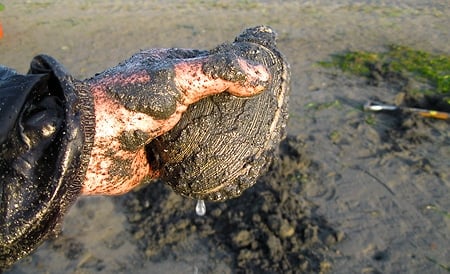
Clamming has always been my first love. With the possible exception of hunting wild onions, clamming has been in my blood longer than any other wild pursuit I do. I can remember my little five-year-old self, chest-deep in the cool waters of Block Island’s Great Salt Pond, digging for quahogs with my feet. I got so good at it I could pick them up with my toes and lift the clams high enough so I could put them in my bucket without ever getting my head wet.
So when I moved within striking distance of the Pacific Coast, I wanted to delve into West Coast clamming in the worst way. But I soon learned that Pacific clamming is, for the most part, very different from what I grew up with. The clams were larger, harder to get, lived in muddier areas — and those areas were few and far between, at least in California.
Looming largest in my mind was Tresus nuttallii, the horseneck clam or gaper. The horseneck clam is to us Californians what the larger geoduck is to Washington state, or what a giant chowder clam is to New England. Living alongside the horseneck is Saxodomus nuttallii, the butter or Washington clam; that’s what I am holding in the picture above. Both make a superior chowder. Sadly, I only know that from restaurants; I’ve struck out every time I’ve searched for them.
Horsenecks and butters are not the tastiest bivalves in the West. I’d say the razor clam, Pismo clam and native littleneck would hold the top spots on the Pacific podium of excellence. But what the larger clams lack in delicacy, they make up for in bulk. A 10-clam limit can net you 2 pounds of pure meat.
There’s something else special about these clams. Keep in mind that foraging is usually defined as hunting for things that don’t run away. So clams are, for the most part, lumped into foraging and not, say, fishing or hunting. But make no mistake: You hunt for horseneck clams. They can escape you as easily as any deer or duck or largemouth bass.
[on_ad]
I learned this Sunday morning — yes, I spent Easter morning on a muddy clam flat. This should not surprise anyone who knows me. We are having some excellent low tides, and my new friend Sol wanted to know if I wanted to head out to Bodega Bay to search for horsenecks and butter clams. Absolutely! This was the chance I’d been waiting for, the opportunity to go clamming with someone with local knowledge.
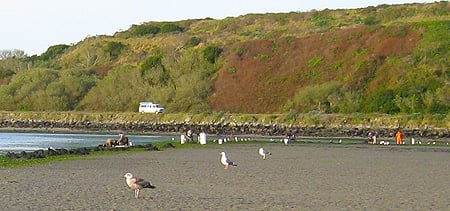
We arrived at the clam flats right at sunrise. To our surprise there were at least 10 other clammers there before us. Guess the lure of low tide bested the call of the church pew. It was already dead low tide, so we had no time to waste. Every minute the tide would roll in further, so we reckoned we’d have two hours to dig, tops.
Remember that while I am an expert clammer in general, I am not an expert clammer in the West. Right off the bat, Sol’s first tip helped me on my way toward gaining that expertise. “Look in the holes,” he said. “Look for what look like lips in the hole.”
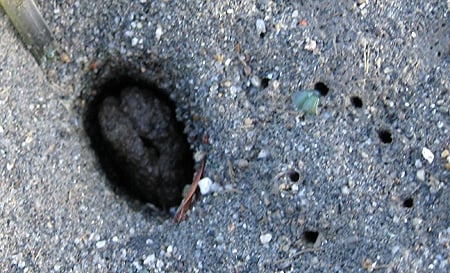
That’s the end of the siphon of either a horseneck or butter clam. Sol’s next pearl of wisdom: That siphon could be more than a foot-and-a-half long. Oh, and the clam on the end of it can bury itself deeper into the ground if it knows you’re coming. So dig fast.
Holy crap! No clam in the East is like this. I’ve never dug more than eight inches into the sand or mud for clams before, even in winter when Eastern quahogs bury themselves deep. OK, then. Here we go.
I soon found an occupied hole. I took a step near it and a geyser of water erupted from its center as the siphon retracted. Game on! I slammed the shovel into the sand beside the hole and dug as fast as I could. Deeper, deeper. No clam. Deeper. No clam. Geez…
“Dig with your hands!” Sol said. “You don’t want to break the shell.” Break the shell? I can’t get near this damn thing, let alone worry about breaking the shell. I clawed at the sand with my hands. Deeper, deeper. Then I felt something. Something firm. Rubbery, and a little leathery. The siphon! I flung myself flat on the sand and grabbed it with my thumb and forefinger. That’s when I realized I was armpit deep in this hole of mine. Or, rather, this hole of the clam’s. My nose was in the sand. I could go no further.
It was a standoff. There was no way I could gain any more leverage on the clam without the hole completely collapsing in on itself. And the clam couldn’t dig itself any deeper because I was holding for dear life onto its siphon. For a long moment we lay there, locked in static combat. Then I did the only thing a higher primate could do, when faced with the stubborn resolve of a mollusk. I let go.
I stood up, panting. God, that was hard! Undaunted, I found another occupied hole. This time I crept softly toward it, shovel at the ready. Deep breath. DIG! I got a full shovel-full away before the clam realized what was happening. I saw the siphon retract, and threw myself after it. Gotchya! This time I had my death grip on the clam’s siphon only about a foot down. I frantically scooped handful after handful of sandy muck with my free hand. I felt the shell. Then the curve around the shell. Leverage! Grunting and gasping, I tugged at the back of the shell, and felt it come free. Success!
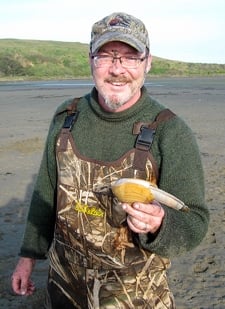
My forearms throbbed uncontrollably. Both arms were on the edge of cramping and several of my fingernails were torn to the quick. Nevertheless, I was as happy as a, well, clam.
Must… get… another.
Sol and I were having a blast. We were on a hot patch, with no shortage of clams to be found. But that doesn’t mean we got ’em all. Not by a long shot. And that’s the coolest part about this sort of clamming: Even though I did get my limit of 10 horseneck clams, along with two butter clams, eight other clams bested me. One was so strong it yanked its siphon free from my grip. Sol and I both think this one might have been a geoduck, the elusive King of All Clams.
In the end, we had our limits by 8:15 a.m. We stood over our buckets, exuberant but exhausted from more than an hour of what Sol calls “full contact clamming.” We filled our buckets with clean seawater and a little eelgrass and headed back to the truck. Conversation shifted to chowders and fritters and fried clam strips.
And to when we can get out again.
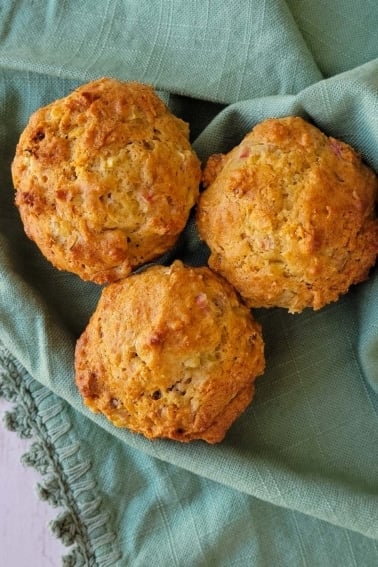
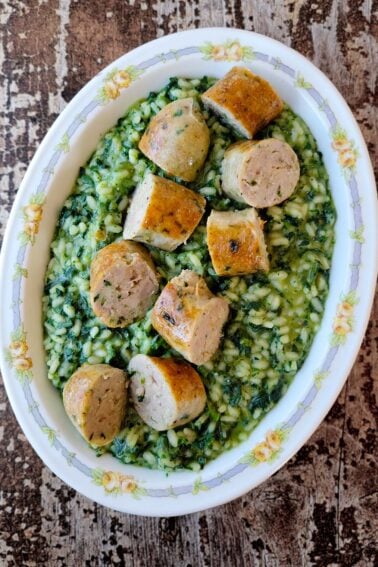
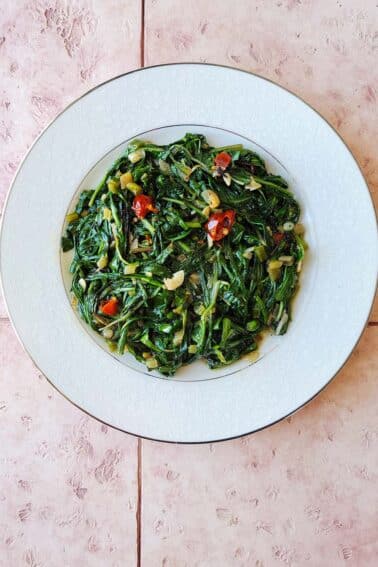
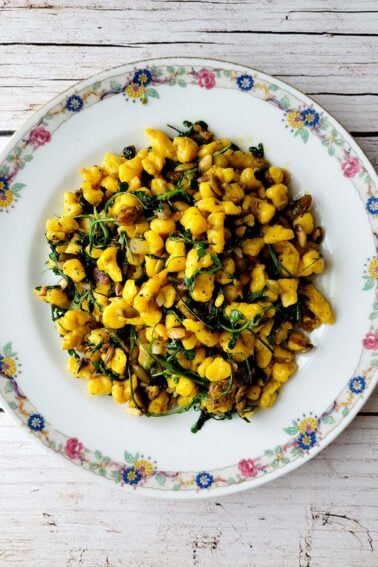
hi. do you know which beaches are good for digging geoducks? thanks
Mal: Typically you need to be north of Sonoma County, California. As for specific beaches? You need to find them on your own.
Funny as hell. Going tomorrow with my son for our first time. Excited and cant wait to get dirty. Thanks for the laughs!
Lol,
My e-mail is Stkn49rs@comcast.net
hi all,
great post! here’s some disambiguation. The clam shown in the top picture is a Washington or butter clam. The siphon show photo is probably another Washington, because a Horse neck has a chitinous plate at the siphon end. Geoduck clams do exist in California but it takes an especially low tide to get them. Geoduck live primarily at the sub tidal zone and are difficult to find in California because the tides are not as extreme closer to the equator. Horse neck clams, also called gaper, empire, horse, and summer clams exist in California in great quantity. The bottom picture is a horse neck (it looks like Tresus nuttallii). There are 2 types of Horse neck clams with capex being more northern and nuttallii more southern. I’ve been digging clams for over 30 years and I can unequivocally state that most clams cannot dig down quickly. The exception is razor clams. They have a smooth shell and a dexterous foot that spreads out and allows them to pull themselves down. If anyone wants to go clamming and be sure to get a limit send me an e-mail.
Hank, sounds like fun. Ironically, my son will be visiting Dillon Beach tomorrow with his summer camp (probably trying to show them how to dig clams! (7 year olds)). Anyway, seems like you are up for adventure, any interest in abalone? Had a great dive last week around timber cove, would love to share the experience? Grew up in Marin, luckily still here. Let me know…
Chris
Just back from early morning foray to Bodega clam beds and happy to report limits for junior and myself. Plenty to find and beautiful as ever. Minus tides all week for the early bird! Thanks for the delightful read.
Chris: Hilarious. I just got back from Tomales, where I got myself some littlenecks and turban snails!
Greetings,
At bodega bay sat,April 23. Can I take a guide and pay someone to teach my grandkids to clam.
My Bucket List?
Thanks,
W. Towson
Wayne: Sorry, no. There are no clam guides, alas.
This is a great post. A note on the gaper clams though: They don’t dig further into the ground as you pursue them; only razor clams, which are outer coast clams, do this. Gapers (and butters, softshells) will stay put. In fact, discarding gapers that you don’t want or break will doom them to certain depth; they can’t rebury easily and that is why some state regulations mandate that you must keep what you dig.
Kate: Yep, I know that now. I wrote that post after my first foray into West Coast clamming. It sure felt like they were escaping me though!
Im going to share a tip with you which might help in future clamming.
When I was a kid we used to go geoducking every summer, the holes always collapse because they are so deep down. My dad took a smooth metal barrel, welded handles on it, and sharpened the opposite end. The trick is to have a wide enough barrel that the clam doesn’t notice when you put it around it. Then you slowly rotate the barrel back and forth cutting into the sand until the handles are at sand level. Next, one person gets ready to grab while the other gets ready to shovel. One quick shovel and grab the neck. Then shovel down the barrel while the other holds the neck, don’t hit your buddys hand with the shovel. Walls stay in place and you get your clam. As I said, we used this for geoduck all the time and it worked really well, we would always get horse clams this way too. Now of course, you practically have to dive for geoduck, but maybe this will help you down in Cali…teamwork is key! Happy clamming.
Haha! You are a great writer! I was googling info about little butterfly clams on Padre Island Texas out of curiosity after seeing them on my beach vacation, and found this thrilling tale! Rock on, clam catcher!
I remember my first trip in Washington state, I ended up with 2 horse clam syphons in my hand without the rest of the clam. If you get a chance hit up Penn cove, Wa. There are Oysters, clams and Mussels all over.
The later it gets in the year, the more clammed out things get. I’m not sure what area you’re in, but around here your best bet is to get a small boat (inflatable, kayak, etc.) and find the flats that happen during low tide. I went out with my brother, husband, and dad this past weekend and in a very small area we found 31 clams in an extremely short amount of time. Another cool trick is to bring a section of pvc pipe that is very wide, at least 1.5 feet in diameter. Once you find your clam hole, and have it partially dug out, you slide the pvc pipe into the hole and stand on it so it pushes further in, then you dig in the center of it. It prevents your hole from collapsing on you and makes it harder to lose the clam. Good luck in future clamming expeditions! ~A native Californian
Hank, what a exciting story. I am incredibly jealous.
Living in Australia, there’s not much of a clam culture. Small clams and cockles, and very restricted in numbers.
I’m Asian girl. I grew up eating razor clams and geoducks, neither of which are readily available here in Oz. You’re tempting me to hop on a flight over to the US of A just for the bivalves!
That was quite a story, Hank.
I have seen clam holes/chimneys when in South Padre Island, TX in July, but have never found the clams below digging with my bare hands. I have not get at it really, have dig maybe 1 or 2 feet at best. Don´t even know what kind of clam can they be.
My intro to geoduck in WA state was watching two young girls digging for one. I had visited the beach for oysters. Enjoyed grilled oysters while watching them dig. They used the sand to build a dam against the incoming tide.
Near the end, an occasional wave breached the dam. So they’d bail then dig more.
The girl that finally pulled it out was laying on her belly in the hole, when the hole completely filled with water. The other girl pulled her out by her feet and she was hanging on to the clam.
Hysterical.
Great story! Is there anything you have to worry about in terms of contamination or best time of year to do it? I remember hearing that you’re not supposed to collect molluscs in months that have the letter R in them… maybe just a superstition. Also, how do you go about getting a permit?
Thanks for such inspired writing!
What a great story. I remember going clamming with my dad and cousin when I was 7 and we lived in Oregon for a year. One day they got a little too ambitious about how far out they went in the flats. It was so muddy and deep with strong suction that they both had to leave their boots in the sand. We still laugh about that day. Thanks for reminding me of it.